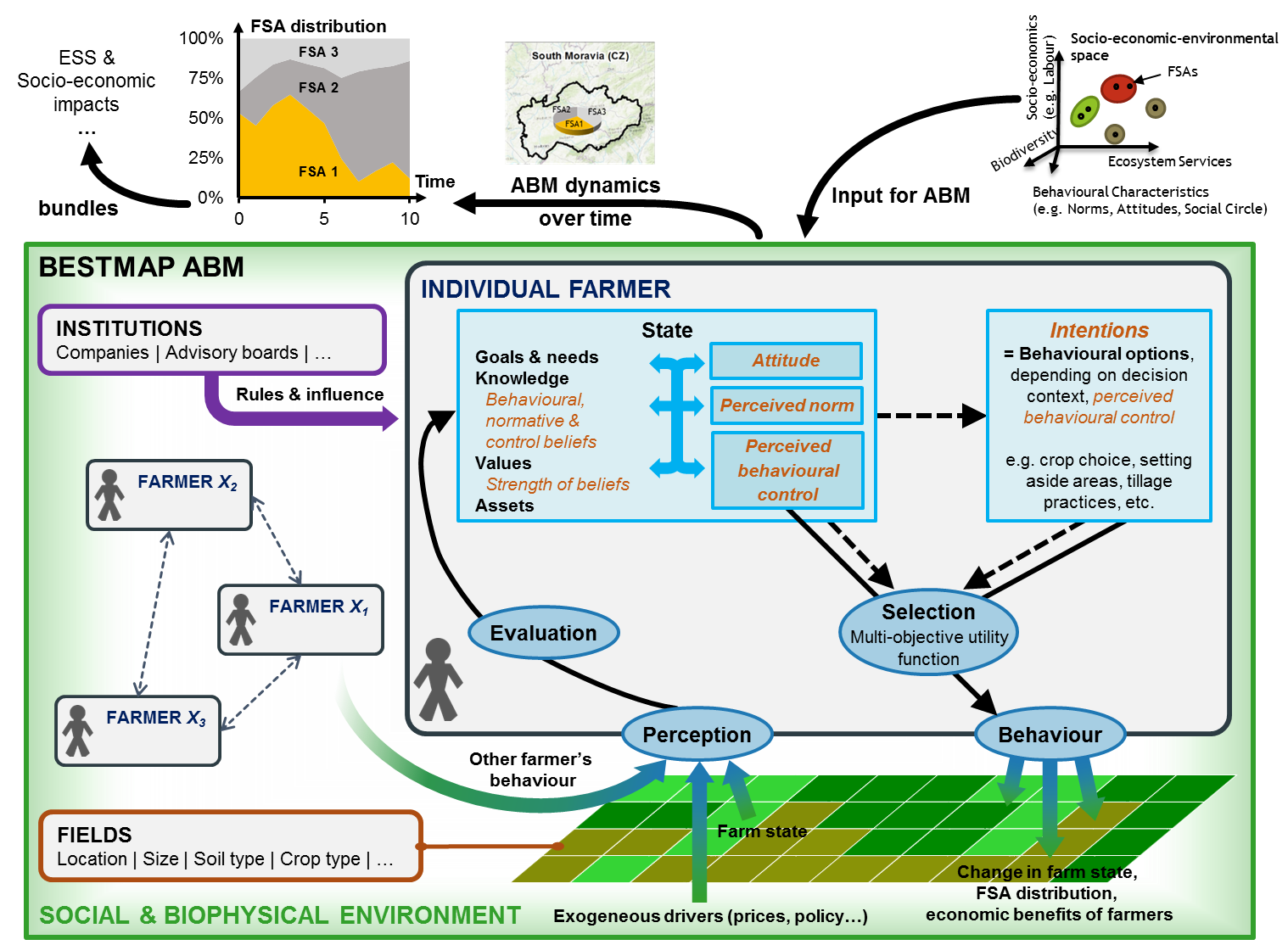
BESTMAP ABM concept. Individual farmer’s decision-making is modelled using the RAA (orange elements). Each farmer agent has an internal state that is characterized by goals & needs (profit maximization, safety first, risk aversion, etc.), knowledge (education, farming strategies, beliefs about consequences of different practices, etc.), values (social norms, strength of beliefs, value of conservation or biodiversity, etc.) and assets (monetary resources, production means, information, etc.). These shape farmer’s attitude towards different behaviours (e.g. pro or contra organic farming), perceived norm (social pressure or other farmer’s behaviour) and perceived behavioural control (agent’s capacity to perform certain behaviours). Every farmer agent can perceive the state of the farming system (e.g. yields, ESS provision), the behaviour of other farmers as well as exogenous drivers (e.g. price or policy changes). Evaluating these lead to changes in attitudes or perceived norm, which can expand or reduce its behavioural options. Each behavioural option represents an intention to perform a certain behaviour (e.g. adopting a different crop choice or setting aside land). Using a multi-objective utility function, the farmer agent will select a specific behavioural option that will change the state of its farm’s fields and provide some economic benefit to the farmer. Specifically, farmer’s decisions can lead to changes in cropping system, farm and field size, or in farm ownership, which allows us to analyse/model structural change.